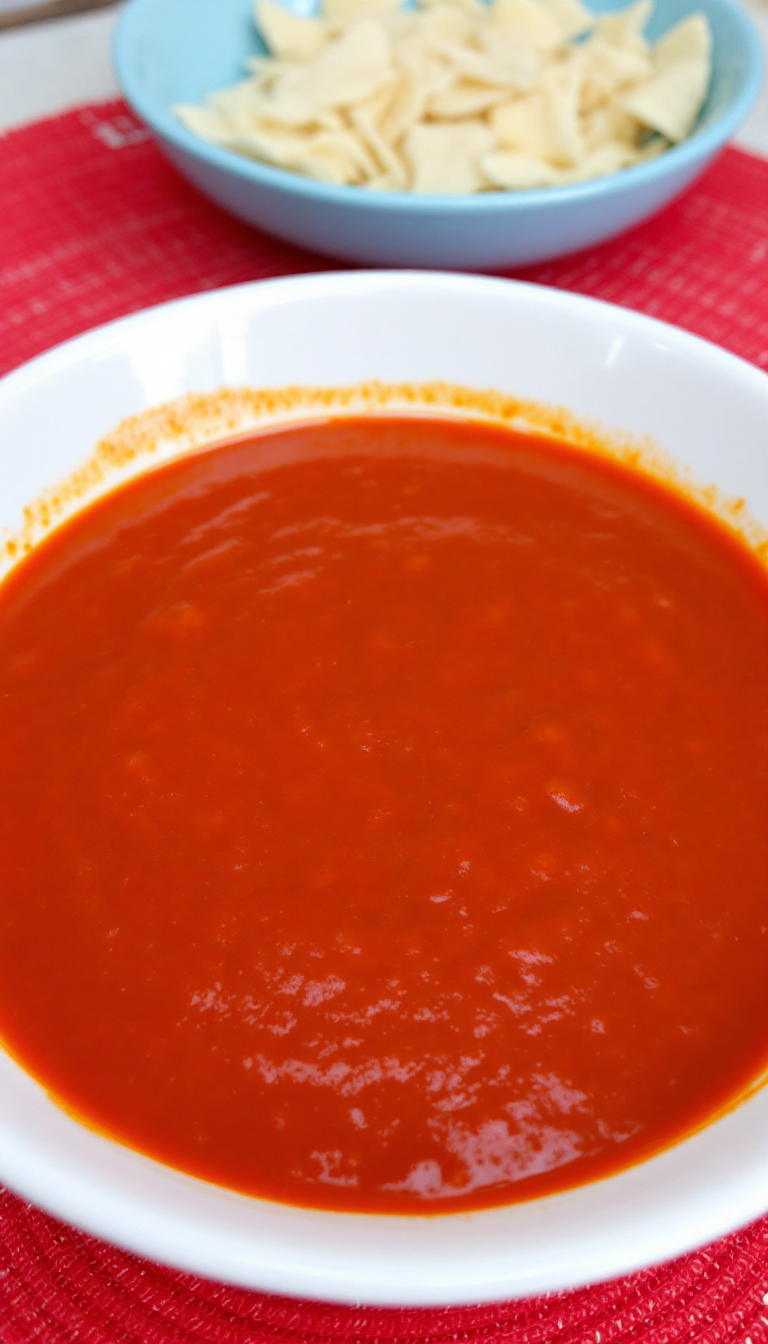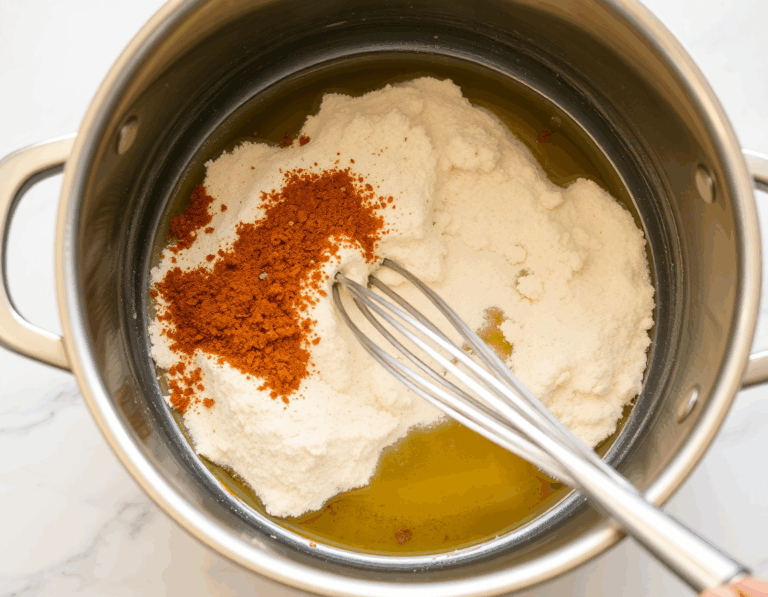Ah, enchiladas—a dish that takes me back to bustling family dinners where the sauce was the unsung hero, tying everything together with its fiery embrace. This red enchilada sauce recipe is like a warm hug for your taste buds, offering a symphony of spices that dance and twirl, sometimes out of sync, but always in harmony. It’s the kind of sauce that makes you wonder why you’d ever settle for store-bought again.
Steps
- Prepare by measuring the dry ingredients (flour, chili powder, cumin, garlic powder, oregano, salt, and optional cinnamon) into a small bowl and place the tomato paste and broth nearby.
- Heat olive oil in a medium pot over medium heat until it’s hot enough that a sprinkle of the dry mix sizzles when added. This might take a couple of minutes.
- Add the flour and spice mixture to the hot oil, whisking constantly for about a minute until it becomes fragrant and slightly darker.
- Incorporate the tomato paste, then gradually add the vegetable broth while continuing to whisk to avoid lumps.
- Increase the heat to medium-high to bring the mixture to a simmer, then lower the heat to maintain a gentle simmer for 5 to 7 minutes, whisking often until it thickens and offers some resistance to stirring.
- Remove from heat and whisk in vinegar, season with black pepper, and taste to adjust salt as needed.
Ingredients
- 3 tablespoons olive oil
- 3 tablespoons flour (whole wheat, all-purpose, or gluten-free flour blend)
- 1 tablespoon ground chili powder
- 1 teaspoon ground cumin
- ½ teaspoon garlic powder
- ¼ teaspoon dried oregano
- ¼ teaspoon salt, to taste
- Pinch of cinnamon (optional)
- 2 tablespoons tomato paste
- 2 cups vegetable broth
- 1 teaspoon apple cider vinegar or distilled white vinegar
- Freshly ground black pepper, to taste
FAQ
- What is the key to making the best enchilada sauce?
- The secret to the perfect enchilada sauce lies in creating a simple roux with equal parts flour and oil, and then adding vegetable broth. This combination ensures the sauce has the right thickness and texture. Additionally, using dried spices sautéed in oil and a touch of tomato paste enhances the authentic Mexican flavors.
- Can I make this enchilada sauce gluten-free?
- Yes, you can make this sauce gluten-free by substituting the regular flour with a gluten-free all-purpose flour blend. Many have tried this substitution successfully, with brands like Bob’s Red Mill working particularly well.
- How can I store leftover enchilada sauce?
- Leftover enchilada sauce can be stored in the refrigerator for up to 5 days. You can also freeze it for longer storage. Allow the sauce to cool to room temperature before transferring it to a wide-mouth mason jar or a freezer bag. If using a jar, leave some space at the top for expansion and don’t fully tighten the lid until the sauce is frozen.
- Is it possible to make this enchilada sauce without tomatoes?
- Yes, you can omit the tomato paste for a tomato-free version. You might want to increase the spices slightly to compensate for the missing tomato flavor. While it won’t taste exactly like traditional store-bought enchilada sauce, it will still be delicious!
- Can I adjust the spiciness of the enchilada sauce?
- Certainly! You can modify the level of heat by adjusting the amount of chili powder. If you’re sensitive to spice or using an especially hot chili powder, consider using less to suit your taste preferences.
Tips
- Pre-measure Ingredients: Before you start cooking, measure the dry ingredients such as flour, chili powder, cumin, garlic powder, oregano, salt, and optional cinnamon into a small bowl. This preparation helps streamline the cooking process and ensures you have everything ready to go.
- Heat Oil Properly: When warming the oil, ensure it’s sufficiently hot by testing it with a sprinkle of the flour-spice blend. If it sizzles, the oil is ready. This step is crucial to bring out the flavors of the spices.
- Whisk Continuously: As you add the flour and spice mixture to the hot oil, whisk constantly to prevent lumps from forming. Continue whisking as you add tomato paste and vegetable broth to achieve a smooth sauce.
- Adjust Seasonings: After the sauce has simmered and thickened, taste and adjust the seasoning. Add freshly ground black pepper and more salt if needed to enhance the flavor.
Equipment
- Medium-sized Pot – If you don’t already have a suitable pot for simmering sauces.
- Whisk – Essential for mixing the flour and broth smoothly into the sauce.
- Small Mixing Bowl – For pre-measuring and holding dry ingredients before adding them to the pot.

